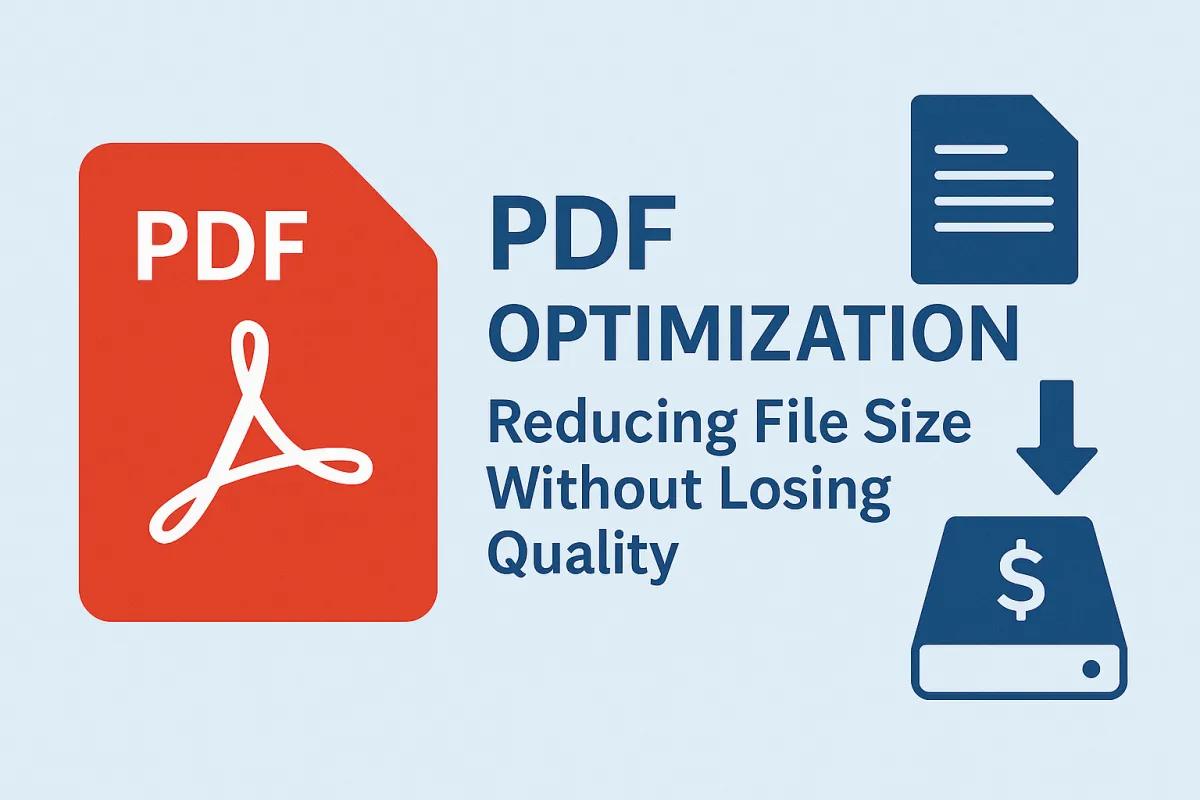
PDF Optimization: Reducing File Size Without Losing Quality
By USA IMAGING, Inc.
In the world of document scanning and digital archiving, high resolution is essential for clarity, compliance, and long-term preservation. But with higher resolution comes a trade-off: large file sizes. For organizations digitizing hundreds—or even thousands—of pages, bloated PDF files can quickly clog up storage space, slow down file transfers, and frustrate users trying to view or share documents. Fortunately, PDF optimization offers an effective remedy.
At USA IMAGING, Inc., we specialize in scanning and optimizing files to meet both quality and usability standards. Let’s explore why high-resolution PDFs become a challenge, and how our optimization techniques reduce file size without sacrificing image quality.
The Problem with High-Resolution Scans
Scanning at 300 or 400 DPI (dots per inch) is often necessary for:
Engineering drawings
Historical records
Legal documents
Fine-print contracts
Photographic or image-heavy pages
This ensures that every detail is preserved, but it also creates very large files. A single full-color page at 400 DPI can exceed 10 MB—now multiply that by hundreds or thousands of pages and you’ll see how fast things escalate.
Why it’s a problem:
Long upload/download times
Difficulty in emailing or sharing files
Storage costs increase
Sluggish performance in document management systems
Poor mobile viewing experience
The Solution: PDF Optimization
PDF Optimization is the process of compressing and simplifying scanned documents without noticeably degrading their appearance.
Step 1: Downsampling
We start by reducing the resolution of scanned images from 300 or 400 DPI down to 200 or 240 DPI. This is a sweet spot: it retains excellent legibility for standard business documents, while dramatically reducing file size.
300/400 DPI: Best for archival or print
200/240 DPI: Ideal for digital viewing and distribution
This step alone can reduce file size by up to 50%, especially for multi-page PDFs.
Step 2: JPEG Compression
Next, we apply JPEG compression to the images embedded in the PDF. This method converts uncompressed raster data into a much smaller, viewable format.
High Quality: Near-original visual clarity, larger file
Medium Quality: Balanced approach for most use cases
Low Quality: Smallest file size, reduced image fidelity
The optimal setting depends on the document's purpose. For internal use or review copies, medium or even low compression may suffice. For client-facing documents or legal records, we typically recommend high-quality JPEG compression.
Real-World Results
When applied correctly, PDF optimization yields impressive results. For example:

These reductions don’t just save space—they save time and money, especially when files are hosted online or accessed remotely by employees.
Why USA IMAGING, Inc.?
With over 30 years of experience digitizing sensitive and mission-critical documents, USA IMAGING, Inc. brings trusted expertise in both high-resolution scanning and smart PDF optimization. We don’t just scan—we deliver ready-to-use digital files that are:
Clear
Lightweight
Searchable (via OCR, when requested)
Easy to store, send, and manage
We tailor every project to your organization’s goals—whether that means pristine archival quality, lightning-fast downloads, or a perfect balance of both.
Let’s Optimize Your PDFs
If you're dealing with bulky PDFs that slow down your workflow, it’s time to optimize. Let USA IMAGING, Inc. take care of the technical process while you enjoy the benefits of faster, leaner, and more manageable digital files.
📍 USA IMAGING, Inc.
12923-D Pomerado Road, Poway, CA 92064
📞 Tel: 858-513-6565
📧 Email: [email protected]
🌐 Web: www.usa-imaging.com
